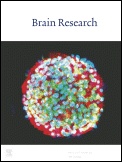
“The psychoactive properties of cannabinoids are well known and there has been a continuous controversy regarding the usage of these compounds for therapeutic purposes all over the world. Their use for medical and research purposes are restricted in various countries. However, their utility as medications should not be overshadowed by their negative physiological activities.
This review article is focused on the therapeutic potential and applications of phytocannabinoids and endocannabinoids. It highlights their mode of action, overall effects on physiology, various in vitro and in vivo studies that have been done so far and the extent to which these compounds can be useful in different disease conditions such as cancer, Alzheimer’s disease, multiple sclerosis, pain, inflammation, glaucoma and many others.
Thus, this work is an attempt to make the readers understand the positive implications of these compounds and indicates the significant developments that can occur upon utilizing cannabinoids as therapeutic agents.” https://www.ncbi.nlm.nih.gov/pubmed/30040916









